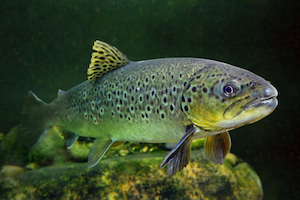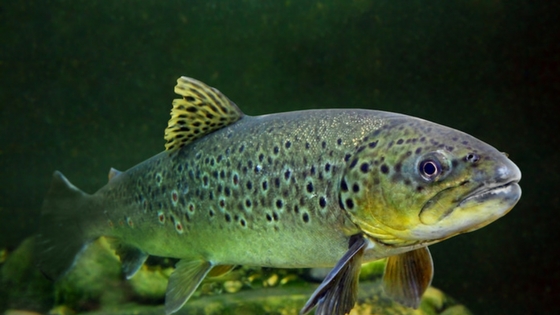Brown Trout Deep Water Fishing

 Deep water fishing for Brown Trout is most popular in the summer or in winter months.
Deep water fishing for Brown Trout is most popular in the summer or in winter months.
Where to find them
- In summer they can be found as deep as 30 feet.
If the lake is deeper, fish water 20 to 30 feet deep that’s close to a drop off. It should offer sunken debris like trees as well as rocks.
Most lakes average 40°F/4°C once the ice leaves the lake and don’t warm up much until late May.
During the spring, lake temperatures are consistent throughout the water column. Spring brings Brown Trout and many other predatory fish to the shallows due to an abundance of food.
Even with the water still cold, the warmer weather brings huge numbers of insects. Many types of fish also spend this time spawning so there’s little reason for Brown Trout to stay deep unless they’re on some sort of diet plan.
When Browns Go Deep
In the fall water temperatures begin to cool sending Brown Trout throughout the water column making it more difficult to find them. Generally this doesn’t really happen until late fall in many areas as the surface layers are still warm.
- And, of course, in winter they seek the bottom of the lake because it’s usually the warmest part of the lake.
This is the time for Trolling.
Deep Water Fishing Tips
Trolling is a good technique for catching Brown Trout when they’re deep.
Baitcasting still works but it’s not as effective as it takes a lot of time to cover a lot of ground. If you know where the Brown Trout are gathering then casting would be your best choice. But for those times when you don’t know where they are, but have a general idea, trolling is best.
Locating Brown Trout can’t be done with a fish finder. In order to have a good chance at catching them, you’ll need to know roughly where they are.
Trolling Technique for Brown Trout
- Use 150 feet of line to ensure that the fish are not disturbed by the surface commotion and to reduce the scare factor from the noise generated by a gas motor.
- For trolling on small lakes, the use of a small but powerful electric motor can help reduce the distance as there’s far less noise.
- Ultra-light spinning tackle should be used for baitcasting.
- Colors are less important when deeper in the water as the brighter colors are limited to the first 10 feet. Colors tend to be more blue around 20 to 30 feet down. This is why spinning tackle and spoons are often recommended for deep water fishing.
Great Lakes Brown Trout Fishing
In the Great Lakes, most of the Brown Trout population is the result of extensive stocking and being under-fished in favor of salmon and other larger charr.
Brown trout don’t head to the bottom of the great lakes to find cool water due to the depth of the Great Lakes.
Lake Superior for example goes to a depth of 1333 feet. Even lake trout rarely go past 280 feet. Focus on areas of the Great Lakes that have a featured bottom. Meaning where there’s sunken debris, rock piles and drop offs.
You don’t have to go way out into the lake to find Brown Trout. You’ll find them within 200 yards, or meters of the shore. These are not Lake Trout after all.


